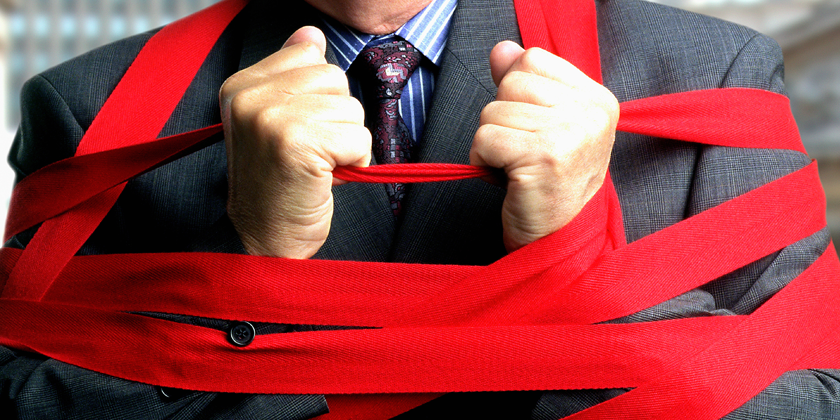New York Licensure Laws – Time to Revisit and Replace
How New York can review our costly licensure laws and enact smart alternatives in order to drive down costs, improve access to service and open up real job opportunities for New Yorkers
By: Dan Smith
More and more, you need permission from the government to work in good jobs. Fifty years ago, only 5 percent of professions required workers to have an occupational license or certification. Today, it’s over 30 percent. Such licenses often require hundreds or thousands of dollars in fees and months or years of often needless coursework and apprenticeships.
New York is getting hurt by this:
- people who are willing to work are kept out of good paying professions,
- the lack of competition in these professions drives up prices and reduces availability of services to consumers, and
- the hurdles keep people from moving to New York because of the added time and expense to get our state’s approval to work. And it is likely contributing to why many are fleeing New York.
The supposed justification for licensing jobs is “to protect the public’s health, safety and welfare” of workers and consumers. And while that sounds like common sense, it is often just not true.
“The preponderance of the evidence suggests that occupational licensing does little to protect public health and safety. It drives up prices . . . and my research shows there’s almost no effect on the overall quality of service,” says Dr. Morris Kleiner of the Humphrey School of Public Affairs at the University of Minnesota—a preeminent researcher on occupational licensing for over 20 years. “Licensing serves only as a fence, a barrier to entry. It hurts entrepreneurs and those individuals who might work for those entrepreneurs.”
Some evidence which backs up Dr. Kleiner:
- many professions require a license in only a minority of states,
- requirements vary widely between states,
- you typically see no meaningful difference in health or safety outcomes between states which require licenses versus those which don’t, in some cases quality declines,
- you see higher consumer prices and fewer jobs in those states which require licenses.
New York’s Licensing Laws Are Cumbersome and Often Make No Sense
As is common with regulations, licensing requirements have crept into more professions and the requirements almost always grow and grow. They are rarely streamlined or reduced. And there’s often little examination by lawmakers as to why they grow. Lawmakers simply take the word of professionals who stand to gain by limiting competition on themselves. It’s often just crony capitalism. Some of the most egregious examples of extraordinary barriers:
- New York requires a license to become an upholsterer, while 40 other states do not,
- In New York, cosmetologists must have over 1,000 hours of education, for the job of giving skin and hair treatments—that’s nine times the training required to be an EMT,
- Makeup artists require 600 hours of coursework in New York—while nine states don’t even require a license for this profession,
- 28 states don’t even require a license to work as a retail optician, but New York requires a license which takes two years of education,
- 32 states do not require a license in order to operate a crane. But New York does. And New York’s rules require 1,095 days be spent obtaining that license—that’s six times the duration of the few other states which require such a license . . . and almost twice the class time of a four-year college graduate, and
- one must pay a $3,000 registration fee to be apply pesticides to vegetation, a $2,300 fee on non-vegetation.
New York licenses hundreds of professions, so there are many, many other examples. And they are hurting New York.
Much Can Be Done to Create Jobs and Help Consumers in New York
Some states are changing their laws to closely review and limit licensing to only the necessary. New York can and should do this, too. The Institute for Justice has concluded, “New York should evaluate whether such onerous licensing requirements can be reduced, repealed or—if government regulation is necessary—replaced with less restrictive regulatory alternatives.” New York can do this safely by contrasting ourselves with other states and by using the market:
- New York can look to other states where licensing requirements don’t exist or are less cumbersome and examine health and safety outcomes for opportunities to remove or reduce the burden for people looking to get to work.
- New York can look for opportunities to rely on private certifying organizations and consumer ratings agencies in order to take the politics out of licensing.
- Where health and safety are indeed an issue, New York can consider requiring bonding or insurance rather than licensing, to rely on independent experts who can evaluate the financial risk in the marketplace and prescribe financially meaningful education and training.
New York lawmakers should demand credible proof that systematic harm exists without a market solution before considering requiring a government license or certification. The cronies who benefit from the way thing currently are will try and scare us into not changing anything. They want to protect the profits they reap from such government protection. But let them provide real, independent evidence of their claims. They should show why other states get the same or better outcomes without their complicated and expensive barriers.
We should remove licenses where no benefit can be demonstrated, let the market determine the risk in many cases and reset the requirements to match the risk. This will allow more people to get to work in good jobs, drive down costs and improve service for consumers—without risking the health or safety of New Yorkers. It will drive out crony capitalism, create lots of good paying jobs and improve access to services and lower costs for New York consumers.
